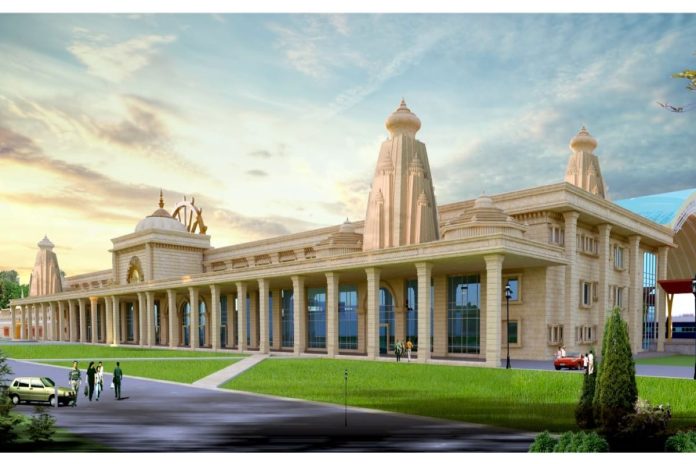Hailing from the sacred city of Ayodhya, Kumar Karthikey, 32, spent his childhood surrounded by instances of protests, issues, debates, and stories from his family around the complexities and politics of Ram Mandir in Ayodhya.
Despite these complexities encircling all his life decisions, he was able to finish his studies with an advanced MBA degree, that allowed him to venture beyond the city’s confines and gave him opportunities to live and work in several countries in southeast Asia.
This was a time, when many like Karthikey, sought to leave Ayodhya, as they felt the town had been on a standstill with no real growth opportunities.
He says, “Most of us did move out, while some found better prospects overseas, others decided to move to larger metros of India, where they saw a future for themselves and their families.”
However, the verdict of 2019 which decided the course of the temple in Ayodhya, also reshaped the perceptions of many young individuals toward their hometown.
Karthikey, being one of them, during his interaction with Swarajya, says, “All the anticipation that harboured in our hearts around the Ram temple, the verdict in 2019, reignited hopes with a direction to go back to my town, and be part of the of this new phase of opportunities emerging with the temple’s construction.”
Today, he operates a tourism service company in Ayodhya, with an objective of introducing the city’s cultural heritage to the world, as the town prepares to open its gates to visitors in large numbers.
“These last two years, looking at the spirit and joy that has been revived among the people of Ayodhya, coupled with government efforts in the city, changed my way of looking at the town.”
He continues, “Seeing the transformation of Saryu Ghat, which through my younger years, remained a smelly neglected area, where it was impossible to even walk, into a well-planned and beautifully adorned ghat, that now holds the grand Deepotsav each year, was the moment that convinced me to return and be a part of the development it is going see in the coming years.”
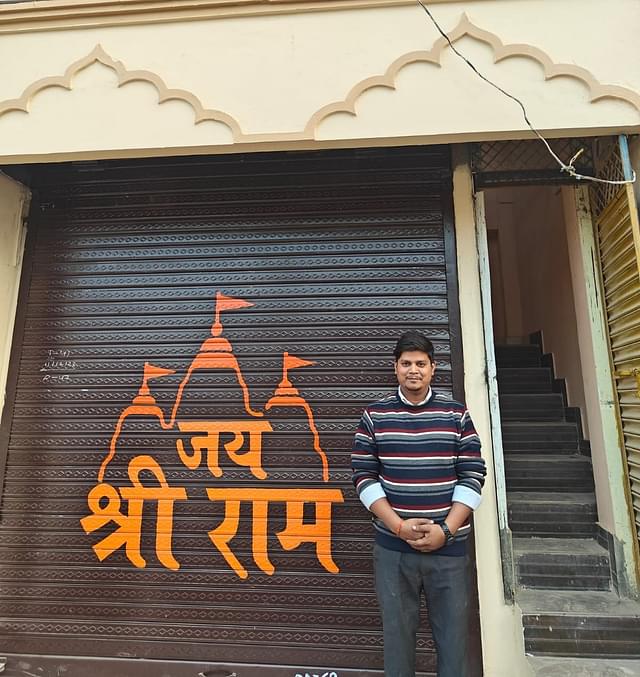
Karthikey now aims to expand this business, as he believes, that not only Ayodhya, but other sacred sites like Prayagraj, Vrindavan, and Varanasi, collectively embody the diversity and depth of the Hindu religion, which is now resurging in people’s hearts.
This has been the spirit and mindset of many youngsters and residents of Ayodhya, who have seen the journey to this transformative moment, steeped in a mix of faith, hope, and controversies.
The Economic Transformations Around The Ram Temple
Over the past two years, Ayodhya has been witnessing various economic and infrastructural transitions, catalysed by the construction of the Ram Mandir — including improvements in connectivity, hospitality and multiple civic amenities, positioning the town as a focal point not just in the country but also on the global stage.
Amid the surge, several new hotels, services, redevelopments, and enhancements to host people have rapidly emerged.
Responding to this demand, Ajay Srivastava and his wife, Laxmi Srivastava, also recently began operating a guest house, which lies in the heart of Ayodhya.
Ajay hails from a lineage deeply serving the Hanuman Garhi Temple and is the eighth generation from his family managing the temple affairs. His family’s historical ties to all phases of the Ram temple in Ayodhya instill within him a profound connection with the town.
His wife Laxmi has taken charge of handling the guest house, located adjacent to their residence, within an area where most landowners are venturing into establishing hotels and guest houses.
Speaking with Swarajya, Laxmi states, “Our intention was to create simple accommodations for those in need. Over the years, due to a lack of spaces to stay, a large number of pilgrims during bigger religious events in the town, used to face hardships, even resorting to sleeping on the streets. This created much trouble for both visitors and residents, with no access to basic amenities like toilets or proper sleeping arrangements.”
“This town holds sacred significance, drawing people with profound beliefs. We wanted to serve people within our capabilities and felt the need to offer a place for visitors, ensuring they do not face such difficulties. However, with the surrounding changes, we chose to develop a proper guest house, considering the demand that is anticipated.”
She adds, “Although we are committed to supporting the evolving landscape, our doors remain open to all — rich, poor, sadhus, and saints. Our seva bhav remains unchanged, to ensure that everyone visiting Ayodhya experiences the sanctity of this place without hardships.”
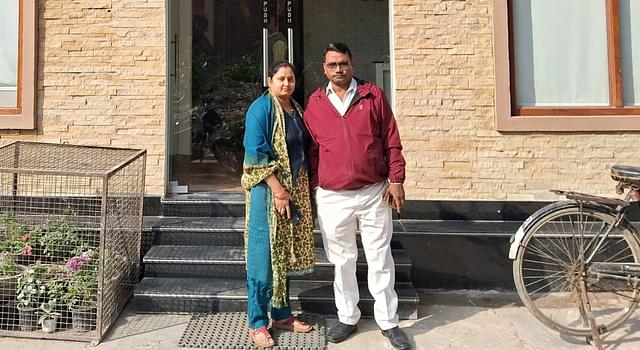
Ajay echoes this sentiment. “Ayodhya has been a tapasya bhoomi, a land for Bairagis (spiritual seekers). Its aura and profound significance have attracted countless devotees over centuries, adorned with numerous temples, ashrams, and sacred sites.”
He adds, “Lord Ram is revered as Maryada Purushottam, the epitome of honour and righteousness. He embodied supreme righteousness in every role — as a son, brother, king, and husband. Learning from this land, we strive to uphold honour and prioritise seva, regardless of the changes and transformations that unfold.”
On the expected changes, he says, “The temple verdict was a moment akin to a grand Diwali celebration in Ayodhya. The people of Ayodhya are mostly dependent on the temples and the economy around it. Before, the town used to see just teerth yatri, and now this land will see thousands of people coming — including the most powerful.”
“For the same, it is our duty to make use of this opportunity for the greater good, while maintaining our nature of service towards our visitors.”
While many such hotels, guest houses, and tent cities are taking shape in the town, the government has also invited the creation of homestays, enabling locals to open their homes to host visitors.
It also acts as a bridge between the locals and the visitors, allowing insightful guidance on the heritage and essence of this town, that the locals can describe to the visitors.
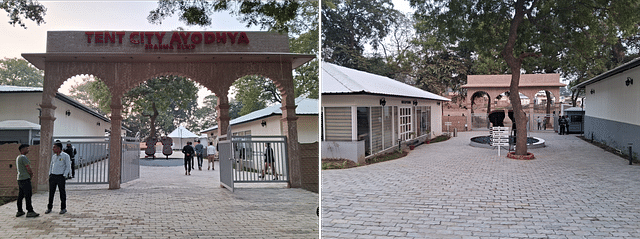
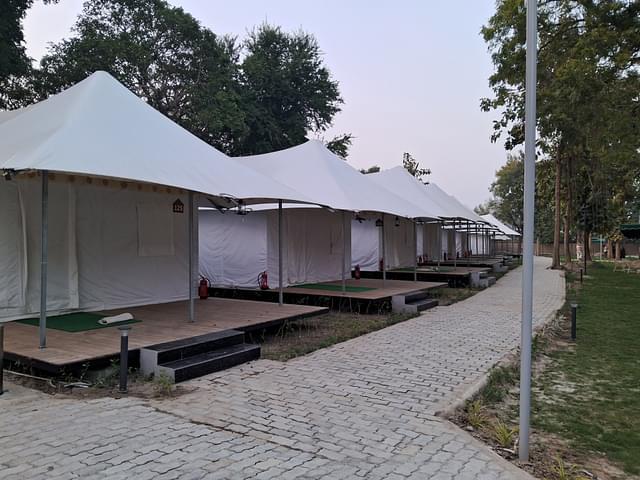
At present, nearly 700 homestays have already been registered, and can be accessed through a platform called Holy Ayodhya.
Speaking of the town’s essence, many people also highlighted that this ongoing transformation, while not easy, will bring back the spiritual core of the town, the long-lost energy and essence of visiting this sacred place.
Ayodhya’s Historic Essence
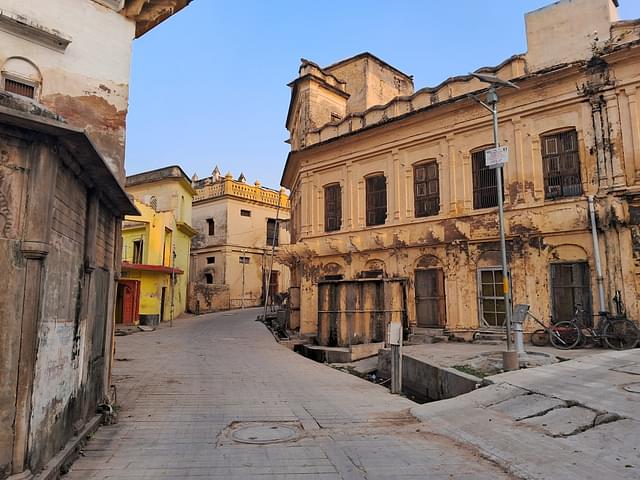
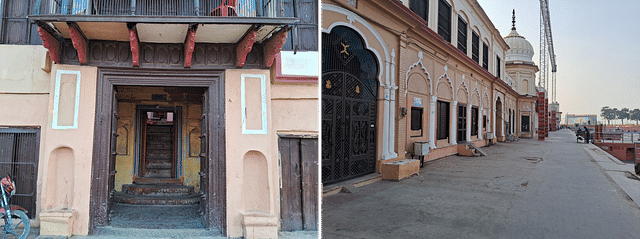
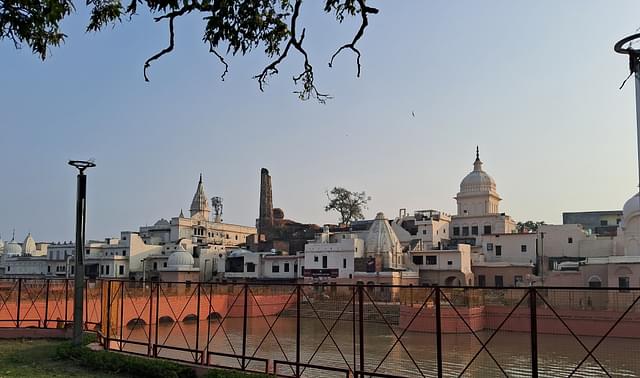
The region hosts several important temples and shrines, serving as a centre of learning, nurturing generations of scholars and thinkers across diverse sects of Hinduism, Jainism, and Buddhism.
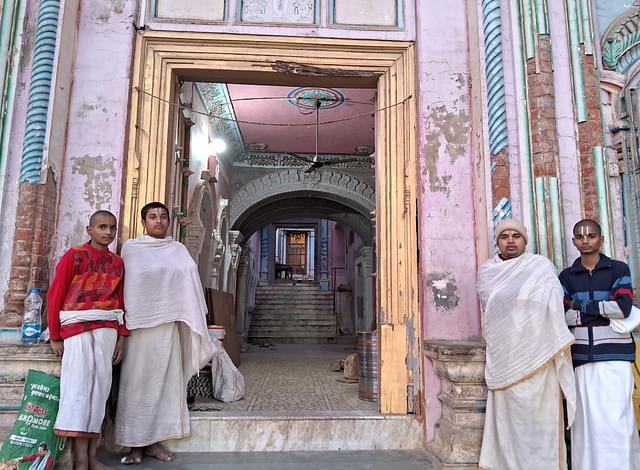
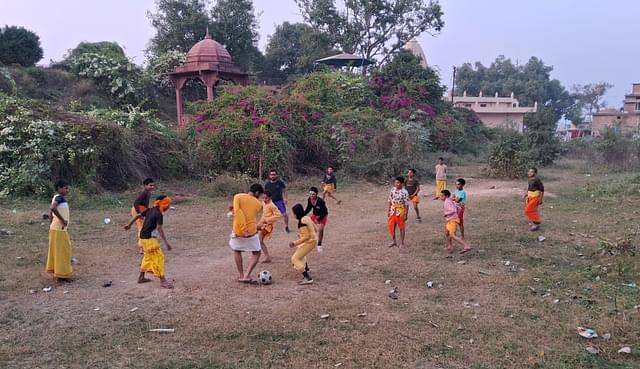
Locals estimate nearly 7,000 temples here, believing that it is not the temples within houses, but it is rather the people residing within the temples of Ayodhya.
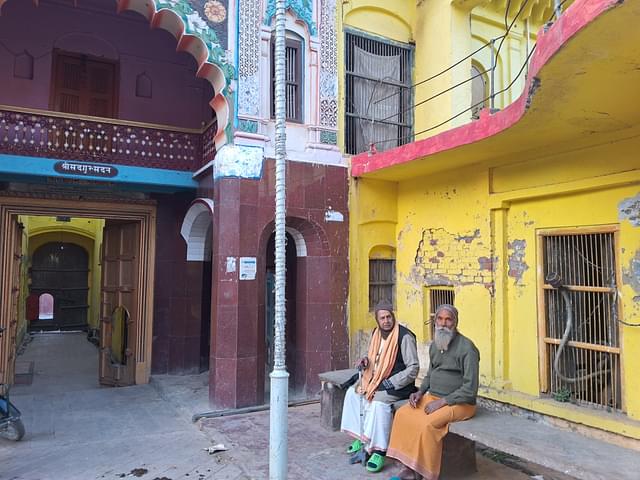
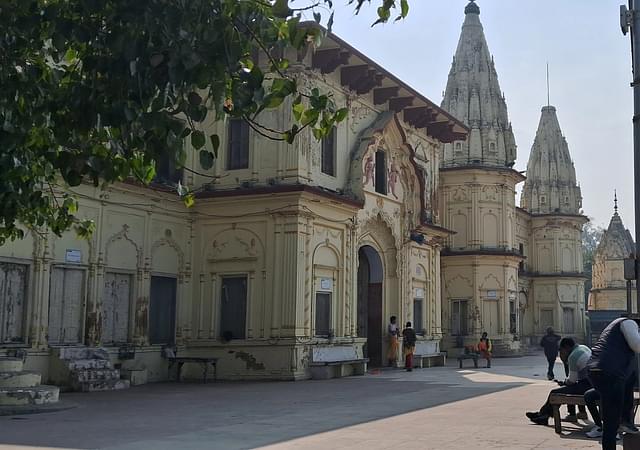
The older parts of Ayodhya are replete with vibrant doors, carved walls, and wooden balconies complementing the temples. The streets are lined with old houses and structures fashioned in a temple style.
Now, an infra push is expected to bring a massive number of devotees to these streets.
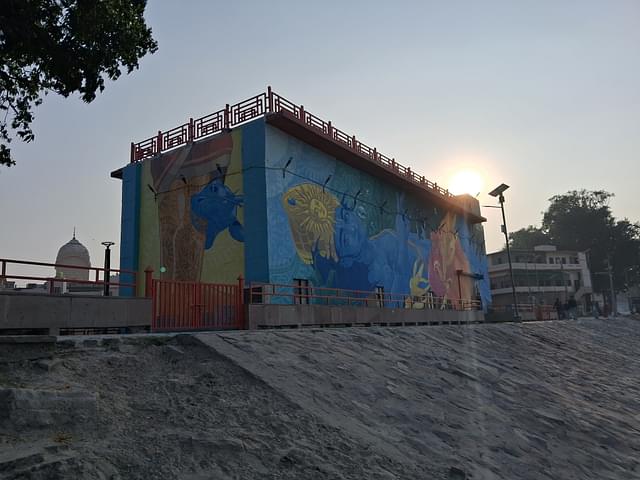
The objective is to make the town more accessible to pilgrim tourism and open the region to investments. The development overhaul spans from the larger connectivity infrastructure to the micro-regional aspects for enhancing the local economy.
While significant attention has been drawn to the larger infrastructural advancements, including the new airport, railway station, and expressway connectivity, efforts are also underway on neighbourhood scale around the temple.
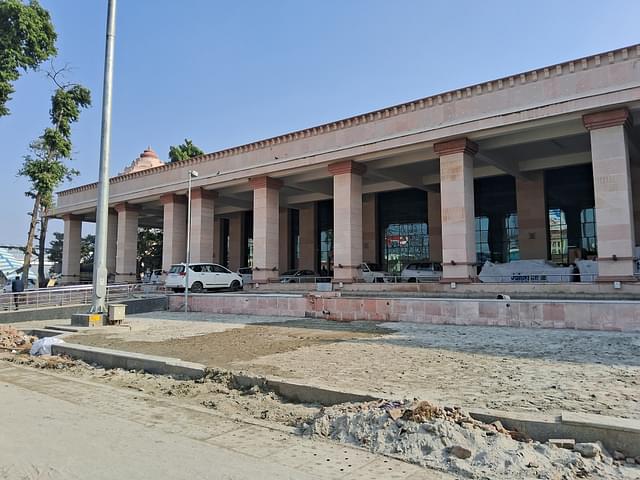
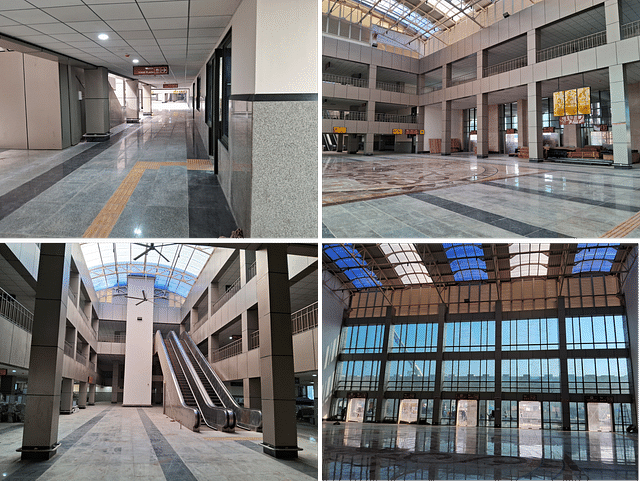

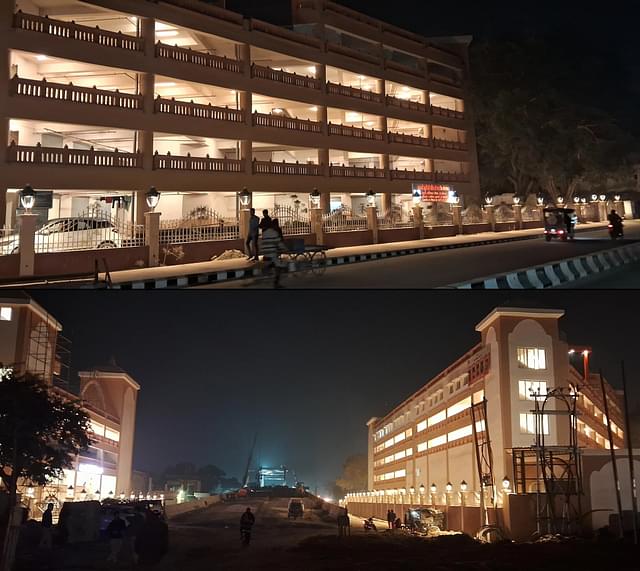
Several urban economic initiatives have been undertaken by the Ayodhya Development Authority — the body at the forefront of this development.
Officials from the authority, state, “Our vision, aligned with the masterplan 2031, aims to bring back and preserve the original divine landscape of the region, emphasising the religious and cultural history of the town while introducing sustainable advancements in green, blue, and grey infrastructure, catering to both present needs and the town’s future.”
The efforts can be seen through the streets that are leading to the temple, and on the holy ghats and water bodies, that have been continuously revived all around the town bringing it out to the people.
Describing the core paths that lead to the temple — the Ram Path, Janmabhoomi Path, Bhakti Path, and Dharma Path, the locals explain, “Once narrow and congested, these paths have now been widened, allowing more space, smoother movement, cleanliness and access to the people.”
The 14 km Ram Path, the longest of all, is now three times its previous width, with even wider footpaths, and has been given a new shape, with more than 3,000 houses, shops, temples, and offices on either side following a unified visual language.
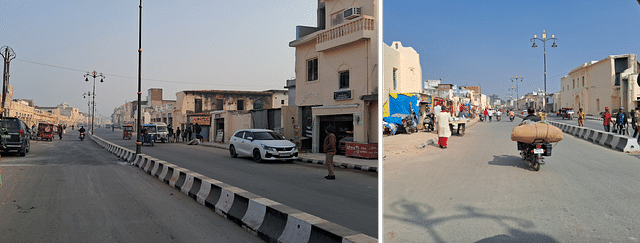
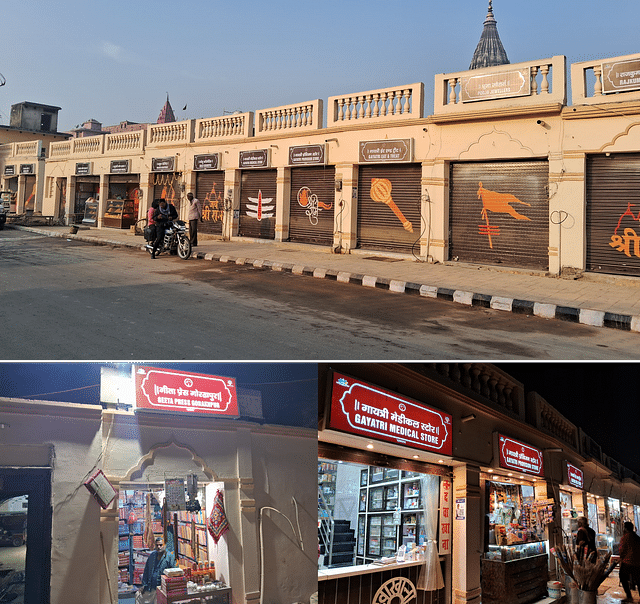
The marketplaces, existing for generations have seen one of the most visible changes with the facades of the buildings being made to align with those along the city’s main artery.
Interestingly, the residents and shop owners are not complaining of the construction, and the disturbances brought about by this transformative process.
On the same Ram Path, Susheel Maurya has been running his shop selling religious books. On asking about what has happened in the last two years, he says, “This shop has seen 40 years of suffering, with multiple political complexities to reach this stage. However, the present government has brought clarity and moved beyond the ‘circus’ ongoing by all the previous political parties.”
He adds, “While many shops, including ours, have been reduced in size, due to the road widening, this new vision has brought everyone together in the region. I am happy with the space we have got as this is a new opportunity for our younger generation to bring forward our work on an international scale.”
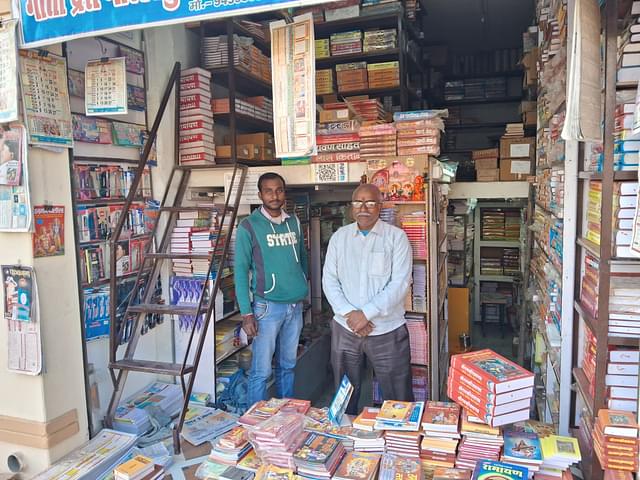
His 24-year-old son, Subrat Maurya, also helping his father, says, “My family’s objective has been to provide visitors with the right literature, resources, and teachings about everything related to Lord Rama, Ramayana, and our town Ayodhya. With the growing interests, specifically among the youth, we are already seeing our business increasing threefold, and I am looking forward to expanding it further, if the opportunity arises.”
According to the ADA official, Ayodhya is blessed with 108 water bodies, of which 59 have been of historical importance. Multiple initiatives are underway with different government bodies to revive these water bodies, which is evident in places like the Saryu Ghat, Ram ki Paidi, Guptar Ghat, Surya Kund and more.
As the town is kept alive with the regular divine Aartis at various temples, the ghats along the Saryu River also offer their sacred Aarti ceremonies.
The Saryu ghat and Ram ki Paidi, today, present a unique divine experience of their own. Every evening, the ghat comes alive with the Saryu Aarti, which is followed by an immersive light and music show based on the Ramayana.
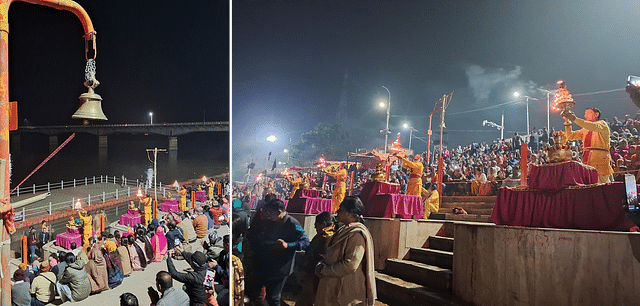
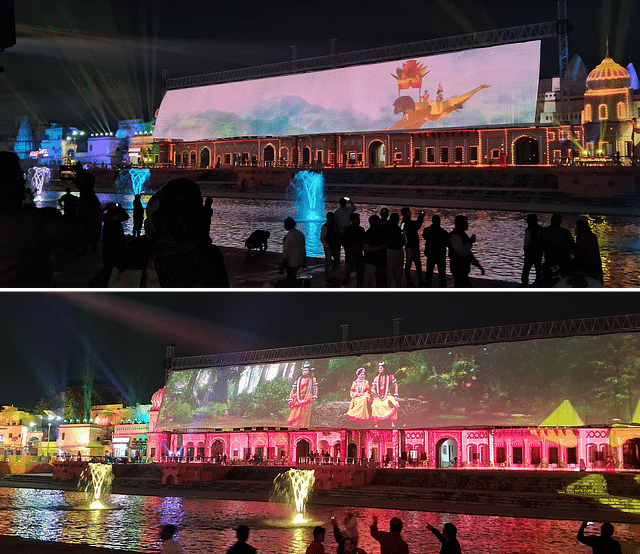
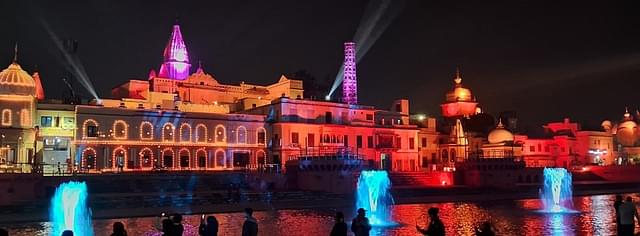
Ayodhya had become merely a brief stop in the pilgrim’s journey. Often only a day’s visit due to limited direct connectivity options. Visitors would arrive in Varanasi or Prayagraj, and plan to spend a day in Ayodhya, focusing only on the major temples.
The arrival of the much-awaited airport, functional rail connectivity, and improved services for accommodation and road connectivity signify Ayodhya 2.0 and will allow people to stay longer and immerse in the town’s richness and cultural essence.
The economic upswing from the temple’s return in Ayodhya has not only fuelled religious sentiments but has also improved residents’ quality of life, inspiring growth for future generations.


